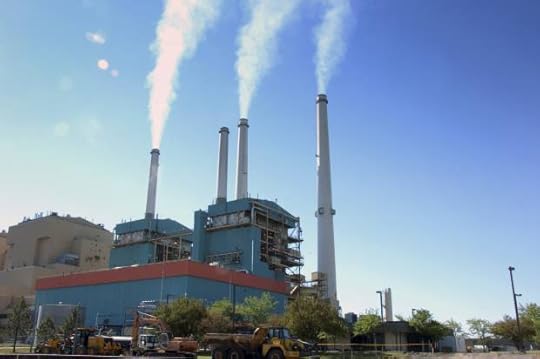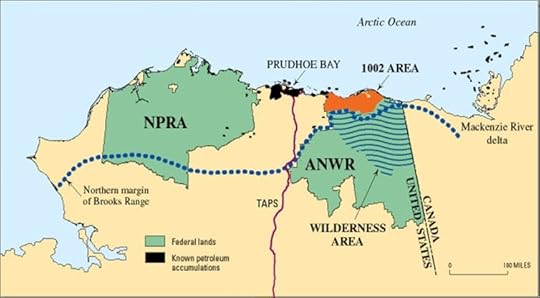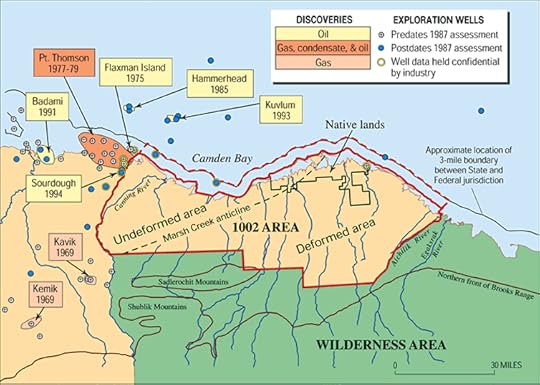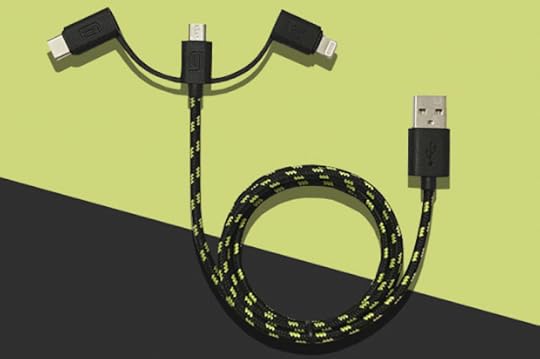Helen H. Moore's Blog, page 203
December 21, 2017
Meet “the most interesting woman in the world”

Photo courtesy of Bonny Simi
Think back to you when you were 14. Do you remember what your goals were?
My goal when I was 14? Achieve perfect bangs. And not use too much hair product. I was a teen in the ’80s, so these things were really, really important.
Here’s what Bonny Simi, president of JetBlue Ventures, wanted to do:
Be in the Olympics
Go to a good college
Be a pilot
Be an ABC TV reporter
Build a log cabin
She made the above list after attending a school assembly featuring motivational speaker John Goddard. He told the story of making a list of 129 things he wanted to do with his life at the age of 14.
Writing her own list of goals was a forgettable school assignment — we’ve all had to do something like it. But for some reason, Simi’s life list followed her into adulthood and inspired some awe-inspiring achievements.
When you first hear everything Simi has accomplished in her life, you may experience a pang of inadequacy or outright disbelief. It’s a perfectly natural reaction to discovering that a real-life Wonder Woman exists. I mean, who other than a superhuman can become one of the first female sports broadcasters, compete in the Olympics, work as a commercial airline pilot and airline executive — at the same time — all in one lifetime? Who does that besides someone endowed with superpowers?
But once you hear her story, you’ll realize that Bonny’s accomplishments are in large part due to her willingness to (figuratively and literally) crash over and over and over again.
“I said I want to be the best luge athlete,” Bonny told me on “Inflection Point.” “So I bought a plane ticket to Germany and proceeded to crash over and over and over again.” See? Literally.
And — good news — you don’t have to be a superhero to do that. You just have to willing to try something new, and be willing to fail.
“I remember walking to the flight school and I literally didn’t know anything about aviation. I’d just wanted to learn and somebody told me just go take three lessons,” she said. “After three lessons — that’s a nice little milestone — you’ll know what you’re getting into.”
When she puts it like that, flying a plane doesn’t seem quite as out of reach, does it?
The most wonderful thing about Bonny? Her complete lack of cynicism. As she told me about her adventures in athletics, aviation and venture capitalism, not once did I hear her express the kind of negative self-talk most of us are guilty of, especially when it comes to confronting traditional gender roles. If anything, whenever someone told Bonny that something couldn’t be done, it sparked a good-natured determination in her to sure-as-hell do it.
Was Bonny born with a combination of optimism and grit that helped her accomplish everything she set her mind and heart to doing? Or is grit something anyone can cultivate, given the right mindset?
Hear what you need to know if you want to knock every item off your list for 2018, how Bonny Simi’s list of goals she wrote as a 14 year old turned into a lifetime of barrier-breaking achievements, and why she deserves the title of “the most interesting woman in the world.”
For more rising up stories, subscribe to Inflection Point on Apple Podcasts, Stitcher or RadioPublic.
A new hack serves as a reminder of Bitcoin’s structural flaws

(Credit: AP/Kin Cheung)
A virtual heist hit a Bitcoin exchange in Seoul — again.
Youbit, a South Korea cryptocurrency exchange, announced it was closing its doors after digital robbers stole an undisclosed number of bitcoins. The exchange was hacked for the first time in April, when an estimated 4,000 bitcoins were stolen. While bitcoin has dramatic, sometimes hourly fluctuations in value, at today’s going exchange rate of $15,000 USD per bitcoin, such a hack would equate to around $61 million lost; although in April, the same sum of bitcoin would be worth only around $4 million, as they were trading near $1,000 per bitcoin back then.
This more recent hack took a reported 17 percent of Youbit’s assets, according to a Reuters report. The precise amount was not specified. The Reuters report also noted that the Korea Internet & Security Agency (KISA) is investigating the cyberattack.
The previous hack of Youbit in April was reportedly linked to a hacker group in North Korea. Indeed, North Korea is suspected to be the culprit in this latest hack, though that remains unconfirmed.
This also marks the second time this week that North Korea has been blamed for a cyberattack.
The hack of Youbit comes at a moment of truth for cryptocurrencies. In the past month, bitcoin reached its highest value ever. That, and the announcement that both the Chicago Board of Exchange and the Chicago Mercantile Exchange would allow futures trading in Bitcoin, also gave the currency mainstream appeal.
Youbit isn’t the only cryptocurrency exchange to suffer a PR nightmare. CNBC reported yesterday that Coinbase, a U.S.-based exchange, was under scrutiny for alleged insider trading. On Dec. 19, the value of Bitcoin Cash — a currency which spun off of bitcoin — started to rise immediately prior to Coinbase’s announcement that it would be supporting it, a coincidence that raised suspicion. Brian Armstrong, Coinbase’s co-founder, wrote a Medium post detailing the company’s trading policy, and announced that an investigation had been launched.
“Given the price increase in the hours leading up the announcement, we will be conducting an investigation into this matter. If we find evidence of any employee or contractor violating our policies — directly or indirectly — I will not hesitate to terminate the employee immediately and take appropriate legal action,” he wrote.
While reports such as these might make one skeptical of the structural underpinnings of cryptocurrency, one expert says it might not be the cryptocurrency that is flawed — but rather the institutions exchanging and holding the cryptocurrency.
“It’s not the inherent security of bitcoin that was attacked, it was the security of the organizations that are keeping track,” Clifford Neuman, Director of USC’s Center for Computer Systems Security, told Salon.
Neuman explained that these exchanges are no different than banks, but they are subjected to fewer regulations, which could be linked to their unforgiving vulnerabilities.
“If the exchange holds funds on behalf of its customers, either in its own Bitcoin wallet, or in Bitcoin wallets that it manages on behalf of its customers, then a hack to the system managed by the exchange can allow the attacker to obtain private keys associated with the bitcoin accounts or otherwise cause transactions to be initiated,” he said.
Yet some argue that the lack of regulation surrounding bitcoin is precisely the source of its appeal. Economist Joseph Stiglitz argued recently that bitcoin is “successful only because of its potential for circumvention, lack of oversight.” Yet if the lack of regulation surrounding bitcoin is part of its appeal, it is also a drawback: hacks, insider trading, dramatic fluctuations, and a lack of a “bank” or somewhere to put one’s money have become the norm.
More worrisome is the process of tracking and penalizing the criminals who orchestrate these hacks. And given that cyber-thieves may be orchestrating hacks from across the planet, or working under the guise of state intelligence agencies, it is unclear if many are even in the grasp of law enforcement.
Here’s why the creator of #MeToo is promoting a new hashtag

Tarana Burke (Credit: AP/Paul Sancya)
Tarana Burke, the activist and founder of the #MeToo hashtag and campaign, and Alyssa Milano, the actor who helped amplify them after the revelations about Harvey Weinstein became public, have co-authored a piece published The Guardian Thursday that promoting a new phase of the movement and a new hashtag, #HerToo.
“For every woman and girl who has been empowered to say #MeToo – #YoTambien, #BalanceTonPorc – countless others are too afraid to break their silence,” the duo writes.
“They fear denial, shame, punishment, blame, further violence and retaliation against them or their families,” they add. “We pledge to build on the power and solidarity of #MeToo to embrace #HerToo . . . you are not alone.”
The article comes after a November 2017 report by Unicef called “A Familiar Face: Violence in the lives of children and adolescents,” which found that 15 million “adolescent girls aged 15 to 19 have experienced forced sex in their lifetime,” nine million of whom “were victimized within the past year.” Only 1 percent of those girls “reached out for professional help.”
It is with these statistics in mind that Burke and Milano are attempting to draw attention to the children and others who do not have the power or ability to share their #MeToo stories on their own terms.
They write:
#HerToo is about our deepest desire to ensure the dignity of every woman and girl is honored. It’s about our personal dedication to building a culture of respect where it is sorely lacking. It is about Unicef’s work – work we all must undertake – to end discrimination and violence against girls and women – and against all children suffering violence and harassment – worldwide, through education, protection and policy reform.
Tarana Burke founded #MeToo a campaign of “empowerment through empathy,” in 2007 to support “marginalized, poor, underrepresented” victims of sexual assault. Initially, the focus was on “women and girls of color who lacked support and resources.” It has since expanded far beyond that as a way for all social-media users to share their experiences of sexual abuse, some say to the detriment to its original aims of amplifying the voices of people of color who rarely get the attention they need and deserve.
To a certain extent, #HerToo can be seen as somewhat of a corrective there. According to its famous advocates, the hashtag exists draw attention back to underrepresented women and girls, be they Boko Haram sex slaves, silenced victims of domestic abuse or anyone who doesn’t have the tools or space advocate for themselves. Its focus is everyone affected by systemic sexual assault, not just those who have the access and privilege to speak out.
As Burke and Milano explain, “when all girls do better, we all do better.”
With polling advantage, Democrats need to push for progressive candidates

(Credit: Getty/AP/Salon)
The most pressing issue of the 2020 election is more than merely defeating President Donald Trump, it’s about upending the decades of political decay — something both parties are guilty of — because the status quo framework is what allowed a reality TV star to thrive in the first place.
A story penned by Bill Scher of Politico makes the case for the opposite, arguing that a “generic Democrat,” like Alabama Senator-elect Doug Jones, would be the best choice for Democrats in 2020. Sure, it very well could solve the nation’s Trump problem, but does it give the public a meaningful vision for the future? Likely not.
Scher cited a Nov. 22. Morning Consult/Politico poll in which the results showed a generic Democratic candidate has a nine-point wider margin of victory over Trump than Sen. Bernie Sanders, I-Vt., should he run for the presidency again in 2020. Both the generic Democrat and Sanders would defeat Trump in the hypothetical match-up. Other recent polling suggests that Sanders still reigns as the most popular politician in the country.
A Morning Consult poll from Thursday shows high voter enthusiasm, specifically among Democrats. That enthusiasm should be tapped into with a progressive vision forward, not with a “generic” centrist that could lead to voter apathy.
Live interview generic ballot polls in December
CNN D+18
Quinnipiac D+15
Monmouth D+15
Marist D+13
POS (R) D+12
NBC/WSJ D+11
— Nate Cohn (@Nate_Cohn) December 20, 2017
“The Senate’s newest member did not embrace single-payer health care, free college or a $15 minimum wage,” Scher wrote. “He did not swerve right on abortion and guns. In fact, he didn’t have any signature policy proposals at all.”
He added, “He was boring. He was safe. He was Mr. Generic Democrat. And it worked.” That candidate sounds quite familiar, because it sounds like Hillary Clinton, who lost.
All of this overlooks the disgraceful candidate Jones went up against: Roy Moore, an accused sexual predator. Still, Jones barely won. The historic turnout from black Americans gifted Jones a victory, but it’s quite clear that they weren’t thrilled about Jones, but they were motivated against his opponent.
Former NBA player Charles Barkley: "Roy Moore was an embarrassment. … I am just so proud of my state. … We've got some amazing people here and they rose up today" https://t.co/QCdcuRzPQL https://t.co/fgOUvxo2zm
— CNN (@CNN) December 13, 2017
Scher was right in his analysis that Jones was perhaps the ideal image for a generic candidate, though that’s hardly compelling enough for any voter who hopes to see a change in Washington, one that’s for the better, one that advocates for needs of the many.
Scher argued that if the Democrats just “stay out of the way and out of the fray” they have a clear path to victory because Trump “has a rabid base but not much else.”
“He [Trump] won last year without a popular-vote majority and his support has eroded ever since, with a national job approval rating mired in the 30s for most of 2017,” Scher wrote. “This month’s Des Moines Register poll shows only 35 percent of Iowans remain on board the Trump train, an ominous sign for a president who squeaked into office by a mere 70,000 votes in certain key Electoral College states.”
The anti-establishment wave, whether it from the left or from the right, should serve as a clear indicator that candidates who have relished in being moderates, and never stood for much at all, are the ones that have brought us here.
The shortcomings of both parties are responsible for the social unrest and increased polarization. A generic candidate will not usher in something new or have a vision that addresses the root of what’s wrong with America’s political apparatus. Scher’s argument assumes politics prior to Jan. 20, 2016, was fair, bipartisan and served the needs of the American people.
Granted, there’s good reason to believe a more leftist candidate wouldn’t have fared any better in Alabama. But there’s also good reason to believe that the sheer fact that Moore was an accused sexual predator, which put him in national spotlight for weeks, means he would have lost against nearly any other candidate. .
A generic Democrat could very well defeat Trump in 2020, but why should voters settle for someone deemed safe and boring? A short-term gain could lead to a devastating setback by a once again fired up opposition that has proven it will cast aside any, and all morals, to achieve victory.
How should communities cope with the end of coal?

(Credit: AP)
The Mon Valley in western Pennsylvania was once at the center of an industrial revolution that put the United States on the map, but you might have trouble picking out some of its towns on that map now.
“These communities have been neglected by everybody,” says Veronica Coptis, the executive director of the Center for Coalfield Justice and a longtime resident of Greene County. She grew up among the emptied-out towns that first sprung up beside the steel factories and coal mines that once lined the Monongahela River for miles.
Now those steel plants are gone, and many of the mines have closed. The coal mines still in operation are largely mechanized, operated by an ever-dwindling number of non-unionized laborers. The Center for Coalfield Justice, based in Greene and Washington Counties, works to protect the rights of people living in mining towns, filing legal challenges and advocating for better policy from the state government.
The work does not make Coptis popular with all of her neighbors.
“My rule of thumb is that I will have any conversation with anyone, but I will not be yelled at,” Coptis tells me. She spends a lot of her time having hard conversations with coal miners who distrust environmental activists on principle, until they realize she is a local fighting for the future of her home.
“Almost all of our staff live in the community, and most of our board of directors and our volunteers” Coptis says. “Our organization is really rooted here.”
Coptis became an activist after the lake in her local Ryerson Station State Park — popular as a local boating and fishing retreat — was drained in 2005 to make way for coal mining. The recreation supported by the lake was one of the only economic activities not linked to mining in the area, and its disappearance left Greene County in even more precarious straits than before.
Coal generation makes up about a third of the United States’ power supply — a share that has been shrinking thanks to a boom in natural gas, among other factors. As the end of coal looks more and more inevitable, so does the need for “just transitions.” That is, the engineering of fair economic and environmental conditions for communities who have historically relied on fossil fuel extraction.
This is what Coptis’ work comes down to: an effort to build a better future for people whose lives have always been entwined with the fortunes of the coal industry.
Our conversation has been edited and condensed for clarity. You can read our cover story on Germany’s just transition here: Life After Coal.
Q.What are some of the misconceptions that people (like me!) tend to have about life in coal counties?
A. I think people believe the narrative that nobody in these communities wants something better. There’s been a lot of, “These rural towns don’t know any better, they’re too dumb to know any better.”
And I would say it’s not that they’re dumb or that they don’t know any better, it’s that these communities have been neglected by everybody, by the Democratic party and by the Republican party. They are just hoping for anything that could be better.
I do find it very ironic that the narrative from some coal workers today is, “This is our identity and our history and we’re doing our grandfathers justice.” Actually, most of their grandfathers were probably union miners and would be super pissed that they’re taking additional cuts and buying the industry propaganda. Historically, the workers were never about the boss. The job was important, the coal industry built our communities, but we never liked the company. The company was always the culprit.
Our community organizer, her grandfather was a coal miner. He made a good salary and he was very intentional that none of his children would ever be coal miners. People actually weren’t like, “Yeah, I want my kid to work in the coal mine.” It only happened generationally because these communities for generations have had no other options.
Q.And what about now, how is the presence of coal mining companies mostly felt these days?
A. The national narrative is “coal is dead.” To the community that I belong to, it’s still very central to our economy. We may hear, for example, there’s only 70,000 jobs in the coal industry, but those jobs are extremely important to people living in our communities. Even if you had one of only 20 jobs, if you’re the one person who loses that job, your entire household is uprooted.
The industry is the biggest culprit for the job loss. They mechanized mining, and that was the biggest loss of jobs over several decades. It wasn’t regulation. It was the increasing mechanization of extraction.
Q. Is there any resentment toward the coal mining companies for that?
A. The industry has done a good job of selling the story they need to sell. If they have someone in the president’s seat that they don’t see as an ally, then it’s the regulation and the president that are the problem. But if they have a friend in the office, like they do with Trump, then they have to quickly blame environmental groups for the loss of the jobs.
The mercury regulation and standards that power plants recently had to start complying with was passed under Bush. It’s not like the government passes a regulation and says now you have to follow it. They actually give you time as a business to plan.
Q.It sounds like there is a lot of misunderstanding about how coal companies respond to regulation. How do you talk to people about these issues as an organizer?
A. Where we do the best work — and this is where I recommend anyone who’s trying to do this should start — is just in a one-on-one conversation.
When we talk about economic issues about coal mining, we don’t talk a lot about regulation. The reality is that coal in Greene County is going to be mined out. Long-wall mining happens at such a quick rate that it’s only a matter of 20 to 30 years before the Pittsburgh coal seam that they’re mining doesn’t exist anymore.
So that gets us away from the argument about whether it’s regulation or mechanization killing jobs. If there’s no more coal left, then there’s no more mining. And that’s going to happen in my lifetime as a young adult in Greene County. We can see the writing on the wall, so why aren’t we planning? Why are we pretending like this isn’t going to happen when we’ve actually seen this happen in other communities?
Q. How do you open a conversation like that?
A. Mostly we ask folks a lot of questions. Do they work for the coal industry? Have they worked for the coal industry? We just try to understand where they’re at in all of it.
We want to hear from everybody. Whether or not you agree with our organization’s mission. We’re not just concerned about the ability of the people who support the Center for Coalfield Justice to have a future and raise families. We’re concerned about everybody’s ability to do that.
We had a coal miner call our office wondering why we cared so much about protecting one stream over their job. I talked with that individual about looking at the longer-term future of this community — it’s going to be dependent on having this stream as a recreational source. And I heard out his concerns, which were valid, about when he was going to go back to work and if he was going to be able to support his family. We agreed to disagree at the end of the conversation, but we were able to have a civil conversation as two people.
Q. It says something about us, doesn’t it, that having a civil conversation can feel like a radical act?
A. Yeah, it does. When we start our conversations, we’re going into it with the hope of starting to build a relationship. And the hope of starting to have people question what our so-called authorities are telling us — whoever we perceive as a trusted authority, if it’s your employer or if it’s your legislator.
Q. What does it mean when a big industry leaves a region? You hear a lot about companies making a sudden departure with no responsibility for what’s left behind.
A. We’re still learning about the bankruptcy process that coal companies tend to go through. In 2015, Alpha Natural Resources filed for bankruptcy. They were operating two mines in Greene County. One of the mines they closed completely and the other one is still operating. But while they were going through bankruptcy, for an entire year, everything got stalled — any disputes with community members to get their home fixed or their water replaced, any taxes they’re supposed to pay the school district.
The trend in history is: Coal companies go bankrupt, they shift all of their liabilities into one company, and that company goes bankrupt so they get out of all their environmental cleanup responsibility.
More importantly, they’re getting out of their retirement, healthcare, and pension responsibility, too. So then we have a whole retired community that no longer has an income or healthcare. And these aren’t people that retired from a job healthy; these are men and women who are sick because they worked a very dangerous and grueling job in the mines.
Q. How do you start to think about replacing mining in Greene County?
A. There’s a lot of focus on the job loss, but the bigger and harder issue to tackle will be taxes. About 40 percent of Greene County’s budget comes from coal property taxes. And when these companies go bankrupt or aren’t operating anymore, they aren’t paying those taxes. That doesn’t just impact the people working in the mine. That impacts every person living in the vicinity.
And the Trump administration is talking about gutting the very little government assistance we have. They’re talking about defunding the Appalachian Regional Commission, which actually supports economic projects on the ground. Trump says he wants to help coal miners, but really what they’re going to do is hurt coal miners and help coal companies.
Q. Can renewable energy businesses take the place of coal companies? Or is that too simplistic?
A. I think that renewable energy is going to play a role. But what got us in this situation of economic uncertainty is a single-force economy. Our economy’s gonna be shifting no matter what, so we need to make it as diverse as possible because that makes it as resilient as possible. Renewable energy should be a piece, but not the only piece.
Q. Are you hopeful about the future?
A. I do have a lot of hope that as communities we have the ability to hold these companies accountable. For years, the community I’m a part of has been told we should be grateful for the company, and we have no power without them. But that’s shifting. People are realizing that if they come together and organize and make demands, those demands can be met.
Chris Christie is quietly reveling in Robert Mueller’s scrutiny of Jared Kushner

(Credit: AP)
New Jersey Governor Chris Christie used an MSNBC appearance to cast suspicion on Jared Kushner, President Donald Trump’s son-in-law and husband to Ivanka Trump.
Christie said Kushner “deserves scrutiny” by special counsel Robert Mueller because “he was involved in the transition and involved in meetings that call into question his role.”
The governor explained that, if Kushner is innocent, the investigation would clear him. But he added, “And if he’s not, that will come out too.”
“Whether he deserves it or not, he’s getting it,” Christie said of the increased scrutiny toward Kushner, “[T]he facts will determine that ultimately.”
Christie also stifled GOP talking points that insinuate Mueller is part of an anti-Trump conspiracy, saying, “[Mueller’s] an honest guy. I believe he will do an honest, fair investigation.”
Watch the clips below.
“(Jared Kushner) deserves the scrutiny .. He was involved in the transition and involved in meetings that call into question his role” – Chris Christie tells @NicolleDWallace on #DeadlineWH pic.twitter.com/2b9Lnqm5GL
— Deadline White House (@DeadlineWH) December 19, 2017
“Bob Mueller is a good man who I think will try to do the right thing by this investigation but that doesn’t mean he’s perfect” – Chris Christie tells @NicolleDWallace on #DeadlineWH pic.twitter.com/uJCFhCdJok — Deadline White House (@DeadlineWH) December 19, 2017
Why Americans will never agree on oil drilling in the Arctic National Wildlife Refuge

Arctic polar bear and cubs in Arctic National Wildlife Refuge (Credit: Getty/sarkophoto)
After decades of bitter struggle, the Arctic National Wildlife Refuge seems on the verge of being opened to the oil industry. The consensus tax bill Republicans are trying to pass retains this measure, which was added to gain the key vote of Alaska Sen. Lisa Murkowski.
This bill, however, stands no chance of being the final word. ANWR has been called America’s Serengeti and the last petroleum frontier, terms I’ve seen used over more than a decade studying this area and the politics around it. But even these titles merely hint at the multifold conflict ANWR represents — spanning politics, economics, culture and philosophy.
Differing views from the start
Little of this debate, which stretches back decades, makes sense without some background. Let’s begin with wildlife, the core of why the refuge exists.
With 45 species of land and marine mammals and over 200 species of birds from six continents, ANWR is more biodiverse than almost any area in the Arctic. This is especially true of the coastal plain portion, or 1002 Area, the area now being opened up to exploration and drilling. This has the largest number of polar bear dens in Alaska and supports muskoxen, Arctic wolves, foxes, hares and dozens of fish species. It also serves as temporary home for millions of migrating waterfowl and the Porcupine Caribou herd which has its calving ground there.
All of which merely suggests the unique concentration of life in ANWR and the opportunity it offers to scientific study. One part of the debate is therefore over how drilling might impact this diversity.

Map of northern Alaska showing locations of the Arctic National Wildlife Refuge, including.
the 1002 Area, which is slated to be opened for oil and gas drilling, and the National Petroleum Reserve–Alaska (NPRA).
U.S. Geological Survey
At the same time, debate over this area’s mineral resources has existed since even before Alaska’s founding. An effort by the U.S. Fish and Wildlife Service to withdraw part of northeast Alaska from mining (later drilling) was eventually passed by the House in 1960 but then killed in the Senate, on the urging of both Alaska senators. It was resurrected by President Eisenhower through an executive order establishing a wildlife range (not refuge, which requires government protection and study).
ANWR thus began as a battleground over state versus federal control of resources. Change came with the oil crises of the 1970s. After much debate, Congress passed and President Carter signed the Alaska National Interest Lands Conservation Act in 1980, increasing the size of the area to 19.4 million acres and changing it to a “refuge.” ANILCA also mandated an evaluation of wildlife, oil and natural gas resources, and impacts if drilling occurred.

Map shows the 1002 Area, which will be opened up to oil and gas exploration, along with existing drilling sites in the region.
US Geological Survey
Such evaluation was delivered to Congress in 1987, with three principal conclusions. First, the 1.5 million-acre 1002 Area, had “outstanding wilderness values.” Second, it also had large hydrocarbon resources, likely tens of billions of barrels. Third, oil development would bring widespread changes in habit, but adequate protection for wildlife was achievable and leasing should proceed.
Made public, these results ignited major opposition from environmental groups. However, low oil prices meant that no companies would be interested in drilling so no action toward leasing was taken. Over the next 20 years, Congress and the President traded blows over drilling, with Republicans passing or proposing legislation in favor and Democrats voting down or vetoing or the relevant bills.
Matters of wilderness
These struggles added support to a larger view: that wilderness is incompatible with any level of development. The stance is often referenced to the 1964 Wilderness Act, a venerable law protecting wildlands but one whose definition of “wilderness” is ambiguous: “an area of undeveloped Federal land retaining its primeval character … [that] generally appears to have been affected primarily by the forces of nature, with the imprint of man’s work substantially unnoticeable.” The vagueness here allows for ANILCA’s position that drilling could happen so long as protection of wildlife and reclamation of land occurred.

Caribou grazing on the Arctic National Wildlife Refuge. The area is more diverse than any area on the Arctic.
US Fish and Wildlife Service, CC BY
Today, however, no such allowance is accepted by pro-wilderness organizations and the FWS. “You can have the oil. Or you can have this pristine place. You can’t have both. No compromise,” as put by Robert Mrazek, ex-chair of the Alaska Wilderness League.
Saving ANWR has thus become an effort to save the very idea of wilderness, culturally and philosophically.
How much oil?
The most recent comprehensive assessment of oil and gas in the 1002 Area was by the U.S. Geological Survey in 1998. This work shows a mean estimate of 10.4 billion barrels of oil and 35 trillion cubic feet of natural gas, which at today’s prices ($57/bbl oil, $3/kcf) equals a total value of about $600 billion before drilling.
If well costs were $50 a barrel (low for onshore Arctic drilling today but possible with cost reductions spurred by 1002 development), the value after extraction would be $100 billion, from which a federal royalty of 12.5 percent must be subtracted, yielding $87.5 billion — a significant sum. Obviously if well costs are higher, this figure would be lower. Note that Alaska gets 90 percent of that federal royalty and pays a yearly dividend to every state resident — one reason many Alaskans favor drilling and reject the uncompromising wilderness position.

ConocoPhillips in October 2015 became the first to drill for oil in the National Petroleum Reserve-Alaska, which is adjacent to the area that Congress intends to open up for more drilling.
AP Photo/Mark Thiessen
When considering how oil and gas is available, the USGS estimates should be considered low, even minimal. This is because they were made well before the current era of shale oil and gas and tight oil and gas development. New discoveries and use of fracking to the west of ANWR suggest there is more accessible petroleum. How much more? It’s impossible to say, given the many uncertainties.
Though only one well has ever been drilled in the 1002 Area, dozens have been sited in surrounding onshore and offshore areas. These have resulted in a number of limited discoveries and one substantial field, Point Thomson, which is estimated to have recoverable reserves of up to 6 trillion cubic feet of gas and 850 million barrels of oil plus condensate. It began producing in 2016, yet its reservoir is geologically complex, challenging and insufficiently understood, causing difficulties and raising costs.
But Point Thomson’s larger significance could stem from its location: Close to the northwestern margin of 1002, it has brought a pipeline connection to the Trans-Alaska Pipeline right to ANWR’s doorstep.
But will they come?
Given the substantial possible reserves and at least some pipeline access, how interested might energy companies actually be in ANWR? The answer for now seems to be: not very. This comes from my own discussions with industry personnel and from the results of a recent lease sale in NPR-A, the National Petroleum Reserve in Alaska to the west of ANWR: Out of 900 tracts offered, only seven received bids (0.008 percent). A December 7, 2017 lease sale on state lands did only somewhat better (0.04 percent), with a single company bidding on tracts near the 1002 Area, adjacent to the Point Thomson field, and in the immediate area of two small, undeveloped discoveries (Sourdough and Yukon Gold) made by BP in 1994.
If this be any indication, another multiyear period of high oil prices — in a range, say, over $80 per barrel — needs to arrive before 1002 looks attractive. Leasing and drilling in an area with extreme weather, little detailed data on the subsurface geology, no discoveries or production, and no existing infrastructure is considered high risk, all the more so in an uncertain price environment like today’s.
My own guess is that the estimated $1.1 billion revenue from an ANWR leasing program has roughly the same probability of coming true as the discovery that climate change is indeed a Chinese hoax. Similarly, we should probably view with a dash of skepticism Sen. Murkowski’s statements that opening ANWR will “create thousands of good jobs … keep energy affordable for families and businesses … reduce the federal deficit, and strengthen our national security” by reducing foreign oil. Regardless of what claims are being made now, one can say the measure would undoubtedly deliver on a long-standing promise to Alaskan voters.
Meanwhile, from an environmental perspective, climate change continues to alter and damage the Arctic, even if no development happens. As such, it is hard not to hope that we will never need the oil that lies beneath the refuge.
In the end, whichever way we turn, no stable compromise exists in this conflict. Opening the area to leasing now will not prevent a closing or ban later on. Even native voices are divided on the issue: The Inupiat who live in Kaktovik, who depend on sea life for sustenance, would welcome the work that drilling could bring, while the Gwich’in to the south, who rely on the caribou, see development as jeopardizing their culture.
Legal challenges to any level of leasing are certain, including those intended to slow the process until drilling opponents will win later elections, if they can.
The one truth all can agree on is that ANWR has never been a “refuge” in the landscape of American society.
Scott L. Montgomery, Lecturer, Jackson School of International Studies, University of Washington
This article was originally published on The Conversation. Read the original article.
This grammar app automatically polishes your writing like a professional editor

Sure, some apps have a spell-check — but what if you could ensure that your writing is mistake-free across the board, whether you’re sending out a tweet, posting a comment on LinkedIn or composing an email? With Grammarly Premium, you can catch every error on every app — and essentially anywhere else you write on the web.
Grammarly not only corrects hundreds of common grammar, punctuation and spelling mistakes, it also catches contextual errors — you know, those annoying accept/except, their/they’re/there fumbles you can make when you’re in a rush. This handy app also improves your vocabulary and suggests stylistic improvements automatically.
It not only helps you improve your writing without any extra input on your end, you can even turn on genre-specific writing style checks. And in the name of learning, Grammarly gives you explanations for all your mistakes and a weekly progress report — so you actually become a better writer over time.
Worried about accidentally copping too much content? There’s a plagiarism-checking feature that scans more than eight billion web pages, helping keep you on the ball. Usually, a 1-year subscription to Grammarly Premium is $139.95, but you can get it now for $69.99, or 50% off.
December 20, 2017
This high-speed cable can charge every device

The last thing you need to worry about when you’re in a rush is whether you have the right cables you need to keep your devices charged for a full day — and with this Triton 3-in-1 Cable, you’ll be ready for everything from holiday travel to the next business quarter.
Unlike other cables, this one is made to last: it’s manufactured with high strength braiding so it won’t fray and tear, and features USB to Lightning, USB Type-C, and micro USB connections. That kills not just two, but three birds with one stone — helping you cut back on tangled cords and clutter.
Plus, the high speed charging powers devices at up to 50% faster — meaning you not only can stay organized while finding what you need faster than ever, you can get a full battery faster than ever.
Get rid of all your typical charging annoyances: usually, this Triton 3-in-1 Cable is $29.99, but you can get it now for $9.99, or 66% off the usual price.
Digitize your vinyl library with the Conversion Turntable

Any serious music lover knows there are valuable audio assets out there available on vinyl only. And despite the special feel of a classic record, it’s not always pragmatic to have an extensive collection — which is why this Conversion Turntable with Stereo Speakers is so amazing.
This turntable makes it possible to have the best of both worlds. Not only does it play your favorite records, you can even use the built-in 1/8″ auxiliary input to play your old school cassettes — and all you need to do is connect your computer with the USB cable and let the exclusive software guide you through the steps to convert your music to digital files.
Even if your collection is massive, you can sit back, enjoy and digitize your entire library — plus, the software automatically separates tracks into individual files for easy organization. And if you’re in the mood to just listen, the turntable connects directly to your home stereo system using standard RCA outputs.
It is possible to get the best of both worlds: usually, this Conversion Turntable with Stereo Speakers is $99.99, but you can get it now for $65.99.




